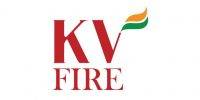 Under Section 19 of the Safety, Health and Welfare at Work Act 2005 (the 2005 Act) every employer shall identify hazards, assess risks and have a written risk assessment, including any unusual or other risks. To comply with Section 19, employers are required to carry out risk assessments and to record these in the Safety Statement. A fire safety risk assessment should be conducted.
Under Section 19 of the Safety, Health and Welfare at Work Act 2005 (the 2005 Act) every employer shall identify hazards, assess risks and have a written risk assessment, including any unusual or other risks. To comply with Section 19, employers are required to carry out risk assessments and to record these in the Safety Statement. A fire safety risk assessment should be conducted.
Emergency procedures must also be in place and practiced to ensure safe evacuation in the event of a fire. Section 11 of the2005 Act states that employers are required to prepare and revise adequate emergency plans and procedures and provide the necessary measures for fire fighting and the evacuation of the workplace.
Sections 8, 9 and 10 of this 2005 Act require that sufficient information, training and supervision is provided to ensure the safety of employees, and also that such instruction, training etc. must take account of any employees with specific needs, to ensure their protection against dangers that may affect them. Consideration for all employees and anyone connected with the workplace must form part of how an employer addresses the area of safety health and welfare and specifically the provision of emergency access and egress.
 The Workplace Chapter of the Safety, Health and Welfare at Work (General Application) Regulations 2007 (the General Application Regulations) has detailed fire safety requirements, e.g. Regulation 11 Doors and gates, Regulation 12 Emergency routes and exits, Regulation 13 Fire detection and fire fighting and Regulation 25 Employees with disabilities.
The Workplace Chapter of the Safety, Health and Welfare at Work (General Application) Regulations 2007 (the General Application Regulations) has detailed fire safety requirements, e.g. Regulation 11 Doors and gates, Regulation 12 Emergency routes and exits, Regulation 13 Fire detection and fire fighting and Regulation 25 Employees with disabilities.
The Safety Signs Chapter of the General Application Regulations has requirements for fire-fighting equipment, emergency escape signs and fire-fighting signs.
A fire in the workplace should be detected quickly and a warning given so that people can escape safely. Early discovery and warning will increase the time available for escape and enable people to evacuate safely before the fire takes hold and blocks escape routes or makes escape difficult.
The nature and extent of the fire detection and warning arrangements in the workplace will need to satisfy the requirements indicated by the employers risk assessment.
In small workplaces where a fire is unlikely to cut off the means of escape, e.g. open-air areas and single-storey buildings where all exits are visible and the distances to be travelled are small, it is likely that any fire will be quickly detected by the people present.
In larger premises, particularly multi-storey premises, an electrical fire alarm system with manually operated call points is likely to be the minimum needed. In unoccupied areas, where a fire could start and develop to the extent that escape routes may become affected, it is likely that a form of automatic fire detection will also be necessary.
 Fire Detection
Fire Detection
All workplaces should have arrangements for detecting fire. IS 3218 gives a basis for assessing what type of detection system will be appropriate for a workplace and will also give guidance of its installation.
Consideration must be given to any parts of the workplace where a fire could start and spread undetected. This could be a storage area or a basement that is not visited on a regular basis, or a part of the workplace that has been temporarily vacated, for example at mealtimes. Fires that start and develop unnoticed can pose a serious danger to people in the workplace.
In workplaces where fire could develop for some time before being discovered, it’s important to protect vital escape routes, particularly staircases, with fire-resisting construction which may include fire-resisting doors.
Installing an effective, reliable automatic fire detection system, linked to an effective fire warning system, can sometimes allow people to reassess the degree of structural fire protection required on escape routes. This can provide a more cost-effective and convenient fire precaution. However, the whole subject of trade-offs between structural protection and other fire protection systems is a complex one and such decisions should only be made after consultation with your local fire authority.
In some workplaces, such as those providing sleeping accommodation or care facilities, automatic fire detection and a high degree of structural protection are essential in ensuring a satisfactory standard of fire safety.
In all instances the detector type chosen should be appropriate for the premises to be protected. For example, a heat detector may function better than a smoke detector in a fume-laden or dusty environment but may not be appropriate for the rest of the protected premises. Choosing the right type of detector will reduce the chances of it giving false fire signals. False alarms can cause costly interruptions to manufacturing processes and business activities. They also increase the risk to occupants if the fire brigade is responding to a false fire call and is not so readily available to tackle a real fire.
Before installing an automatic fire detection system, it is advisable to consult the fire authority about what you propose. This can help make sure the system is appropriate to the circumstances of the workplace and avoid unnecessary costs.Automatic fire detectors or smoke alarms do not remove the need to provide a means for people to manually raise a fire warning, and this will be essential in the majority of workplaces.
Fire Warning
In almost all buildings, a suitable electrically operated fire warning system, with manual call points positioned both on exit routes and adjacent to final exits should be installed. This should have sufficient sounders for the warning to be clearly heard throughout the workplace. The sound used as a fire warning should be distinct from other sounds in the workplace and, where background noise levels are high or an employee has a hearing impairment, it may also be necessary to install a visual alarm such as a distinctive flashing or rotating light.
In more complex buildings such as retail premises, where the evacuation system is based on staged or phased evacuation, or where people are unfamiliar with the fire warning arrangements, the landlord or employer might consider installing a voice evacuation system. The system could form part of a public address system and could give both fire warning signals and verbal instructions in the event of fire.
Where a public address system is used in conjunction with a fire warning system, both should over-ride any other function of the equipment (such as playing music). The public address element of the system should give clear verbal instructions and should over-ride the fire warning signal – this should be distinct from other signals which may be in general use.
If an automatic fire detection system and a manually operated electrical alarm system are installed in the same workplace, they should normally be incorporated into a single integral system. Voice evacuation systems should be similarly integrated to prevent confusion.
Electrical fire detection and alarm systems should normally comply with relevant standards including IS 3218. Again, it is advisable to consult the fire authority about your proposals before installing a new fire warning system or altering an existing one.
Maintenance and Testing
Fire safety measures and equipment in the workplace must be kept in effective working order. This includes all fixtures and fittings such as fire doors, staircases, corridors, fire detection and alarm systems, fire-fighting equipment, notices and emergency lighting. Regular checks, periodic servicing and maintenance must be carried out, whatever the size of the workplace. Any defects should be put right as quickly as possible.
An employer or nominated employee can carry out checks and routine maintenance work. However, it is important to ensure the reliability and safe operation of fire-fighting equipment and installed systems such as fire alarms and emergency lighting. This is best done by using a competent person to carry out periodic servicing and any necessary repairs. A record of the work carried out on such equipment and systems will help to demonstrate compliance with the law.Fire Detection and Warning Checklist
The following is a useful checklist which will help ensure that fire precautions are instigated and maintained to an acceptable standard.
- Where necessary, is a fire detection and alarm system installed?
- Is all fire detection and alarm equipment regularly checked?
- Are there instructions for relevant employees about testing of equipment?
- Are those who test and maintain the equipment properly trained to do so?
- Can the existing means of detection discover a fire quickly enough to raise an alarm in time for all the occupants to escape to a safe place?
- Can the means for giving warning be clearly heard and understood throughout the whole premises when initiated from any single point?
- If the fire detection and warning system is electrically powered, does it have a back-up power supply?
- Have you told your employees about your fire warning system, will they know how to operate it and respond to it?
- Are there instructions for your employees on how to operate the fire warning system and what action they should take on hearing a warning?




















































